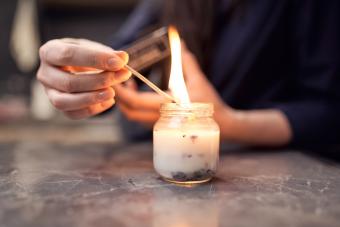
Explore the multiple uses of cleaning vinegar. Find out how and when to use cleaning vinegar in your home. Get a few brands of cleaning vinegar to try.
What Is Cleaning Vinegar?
You might have used white vinegar to clean your house, but have you ever tried cleaning vinegar? Cleaning vinegar is a more effective cleaning agent than white vinegar. Why? Because cleaning vinegar has a higher level of acetic acid. It might only be 1% at 6% rather than 5%. However, that 1% can make a huge difference when it comes to cleaning. Actually, cleaning vinegar is about 20% more effective at getting out those tough messes.
Is Cleaning Vinegar the Same as White Vinegar?
Cleaning vinegar is not the same as white vinegar or apple cider vinegar. It's 1% stronger for your cleaning projects. However, that doesn't make it better. It just makes it stronger. For some cleaning messes, stronger isn't always better. And the cleaning power of cleaning vinegar can work against you like for cleaning wood floors and metal. The acidity of the cleaning vinegar can destroy the protective coating on these things.
What Is Cleaning Vinegar Used For?
Cleaning vinegar can be used on all types of surfaces around the house. From the kitchen to the bathroom, cleaning vinegar has several uses.
Using Cleaning Vinegar in the Bathroom
Cleaning vinegar can cut through the soap scum, and grime found all over your bathroom.
-
For the tub, sink, and mirror, create a 1:1 mixture of cleaning vinegar and water in a spray bottle. Spray and rinse.
-
For toilets, add a cup or two to the tank and let it sit. Scrub and flush away those germs.

How to Use Cleaning Vinegar in the Kitchen
Cleaning vinegar can be used from your floors to your countertops in your kitchen.
-
Clean countertops and sinks with a 1:3 mixture of cleaning vinegar to water in a spray bottle.
-
For floors, add ½ cup of cleaning vinegar to a gallon of water and mop.
Using Cleaning Vinegar in the Laundry
Just like with white vinegar, cleaning vinegar has a plethora of benefits in the laundry room.
-
Add ½ cup of cleaning vinegar to the rinse cycle of a load of whites, mildewy laundry, or even gym clothes to deodorize and brighten.
-
Soak dingy clothes in a gallon and a cup of cleaning vinegar and let them sit for the night.
When Not to Use Cleaning Vinegar
Vinegar is acidic, and cleaning vinegar moreso; therefore, it can harm some materials and appliances in your home. Avoid using cleaning vinegar on:
-
an iron
-
soapstone
-
electronic screens like computers, TVs, and tablets.
-
knives
-
wood flooring
-
wood furniture
-
egg messes
Brands of Cleaning Vinegar
Cleaning vinegar can be found at most of your local grocery stores and supermarkets. You can even find it at large superstores like Walmart, Lowe's, Home Depot, and Dollar Tree. Just a few of the different brands of cleaning vinegar available include:
-
Heinz Cleaning Vinegar is made of all-natural ingredients.
-
Schmidt's Cleaning Vinegar adds amber and aloe to the mix.
-
HDX Cleaning Vinegar is available from Home Depot.
-
Aunt Fannie's Cleaning Vinegar has a fresh, lemony smell added.
Depending on how much cleaning power needed in your home, you can find these in large gallon jugs or easy to use spray bottles.
Is It Safe to Ingest Cleaning Vinegar?
Unlike white vinegar, cleaning vinegar is not safe to ingest. The bottle also carries a warning label for users. Since this type of vinegar is designed for cleaning, it's not regulated for impurities like cooking vinegar. Therefore, consuming cleaning vinegar is dangerous. If you have both in your home, consider storing them in different areas.
Using Cleaning Vinegar
People around the world use vinegar to clean and disinfect their homes. Add a bit more firepower to your cleaning regimen by trying cleaning vinegar instead.







